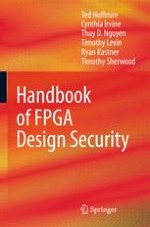2010 | OriginalPaper | Chapter
2. High Assurance Software Lessons and Techniques
Authors : Dr. Ted Huffmire, Dr. Cynthia Irvine, Thuy D. Nguyen, Timothy Levin, Dr. Ryan Kastner, Dr. Timothy Sherwood
Published in: Handbook of FPGA Design Security
Publisher: Springer Netherlands
Activate our intelligent search to find suitable subject content or patents.
Select sections of text to find matching patents with Artificial Intelligence. powered by
Select sections of text to find additional relevant content using AI-assisted search. powered by
